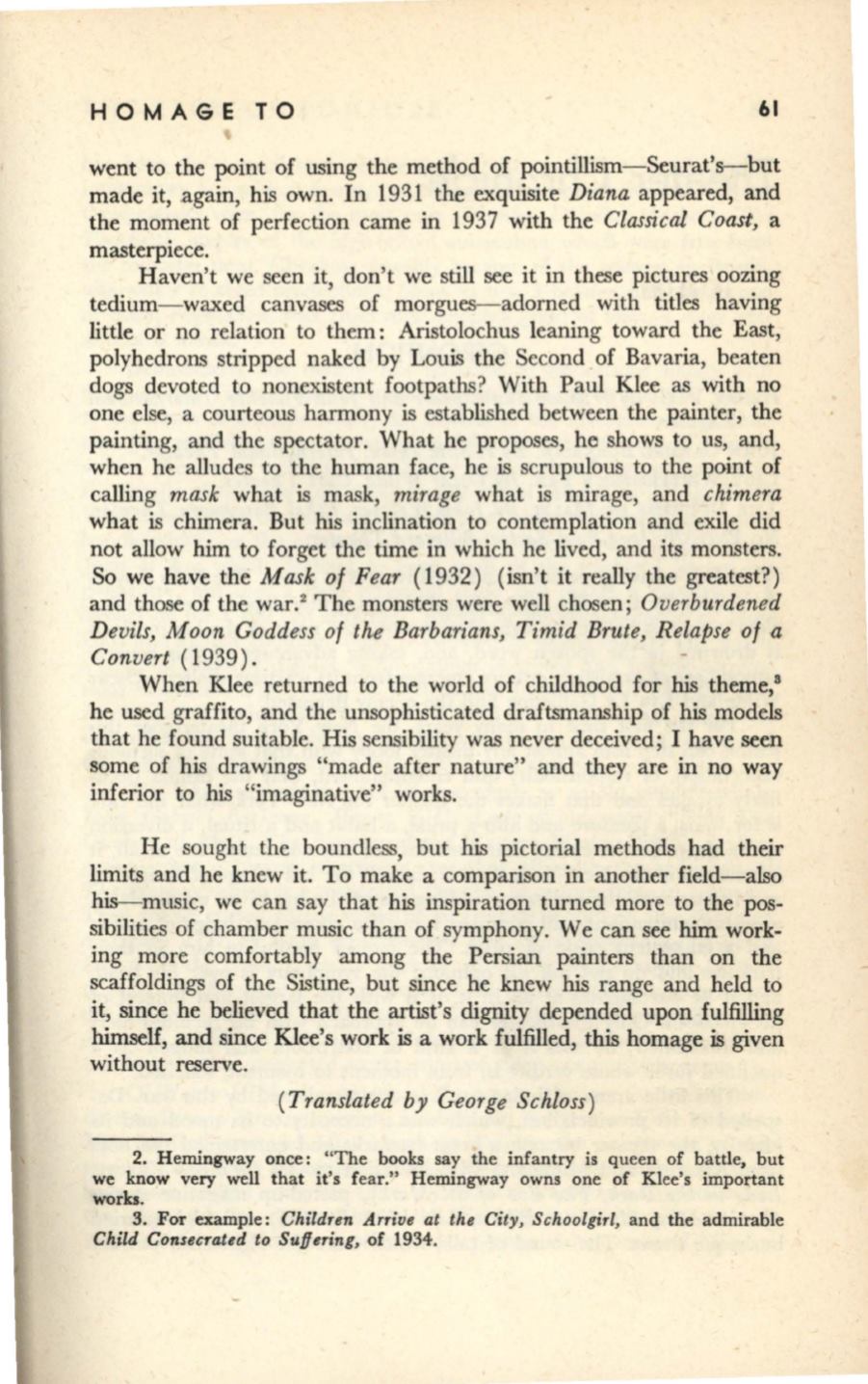
HOMAGE TO
61
went to the point of using the method of pointillism-Seurat's-but
made it, .again, his own. In 1931 the exquisite
Diana
appeared, and
the moment of perfection came in 1937 with the
Classical Coast,
a
masterpiece.
Haven't we seen it, don't we still see it in these pictures oozing
tedium-waxed canvases of morgues- adorned with titles having
little or no relation to them: Aristolochus leaning toward the East,
polyhedrons stripped naked by Louis the Second .of Bavaria, beaten
dogs devoted to nonexistent footpaths? With Paul Klee as with no
one else, a courteous harmony is established between the painter, the
painting, and the spectator. What he proposes, he shows to us, and,
when he alludes to the human face, he is scrupulous to the point of
calling
mask
what is mask,
mirage
what is mirage, and
chimera
what is chimera. But his inclination to contemplation and exile did
not allow him to forget the time in which he lived, and its monsters.
So we have the
Mask of Fear
(
1932) (isn't it really the greatest?)
and those of the war.
2
The monsters were well chosen;
Overburdened
Devils, Moon Goddess of the Barbarians, Timid Brute, Relapse of a
Convert
(1939).
When Klee returned to the world of childhood for
his
theme,
8
he used graffito, and the unsophisticated draftsmanship of his models
that he found suitable. His sensibility was never deceived; I have seen
some of his drawings "made after nature" and they are in no way
inferior to his "imaginative" works.
He sought the boundless, but his pictorial methods had their
limits and he knew it. To make a comparison in another field-also
his-music, we can say that his inspiration turned more to the
pos–
sibilities of chamber music than of symphony. We can see him work–
ing more comfortably among the Persian painters than on the
scaffoldings of the Sistine, but since he knew his range and held to
it, since he believed that the artist's dignity depended upon fulfilling
himself, and since Klee's work is a work fulfilled, this homage
is
given
without reserve.
(Translated by George Schloss)
2. Hemingway once: "The books say the infantry is queen of battle, but
we know very well that it's fear." Hemingway owns one of Klee's important
works.
3. For example:
Children Arrive at the City, Schoolgirl,
and the admirable
Child Consecrated to Suffering,
of 1934.


